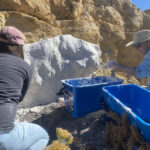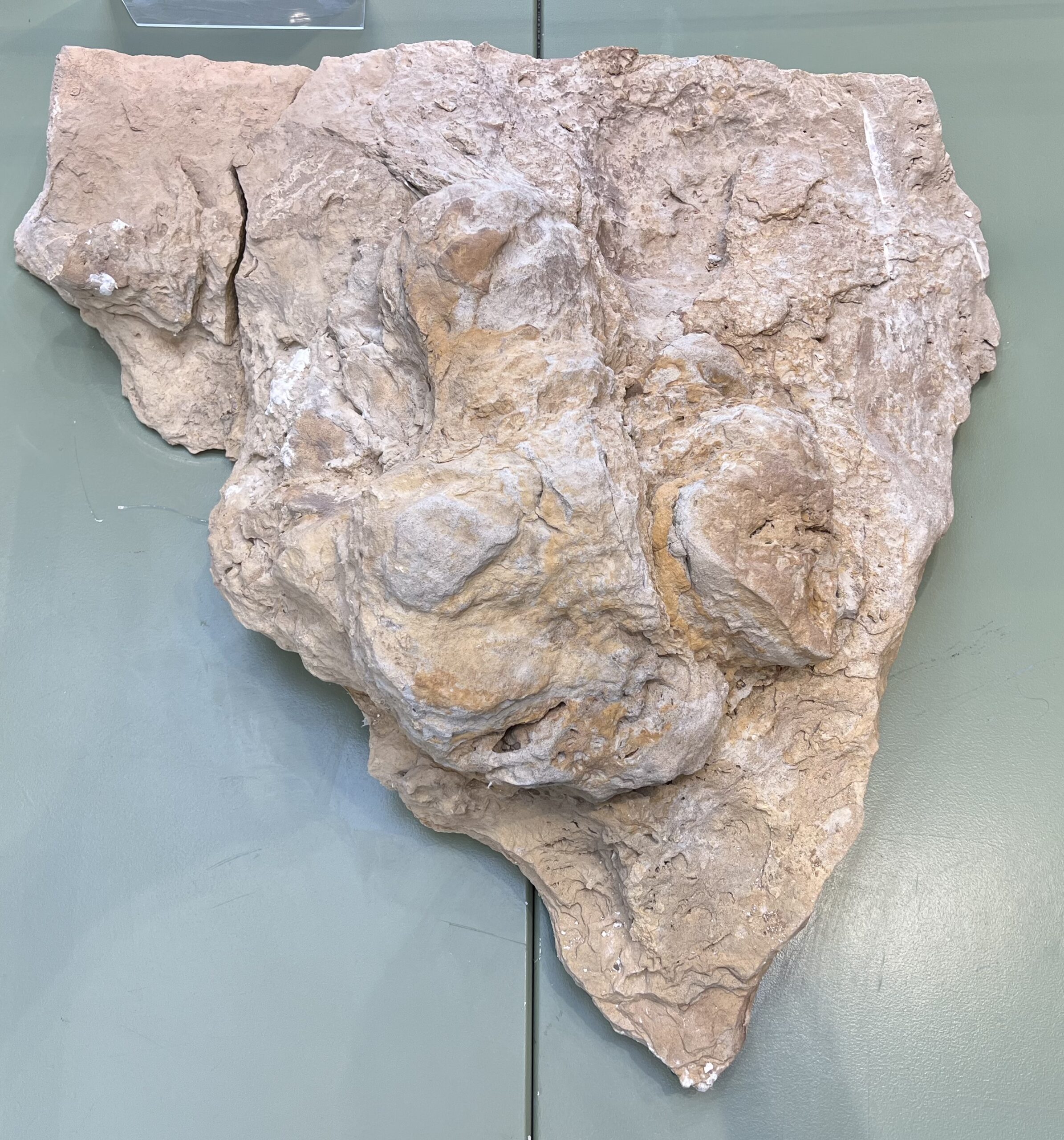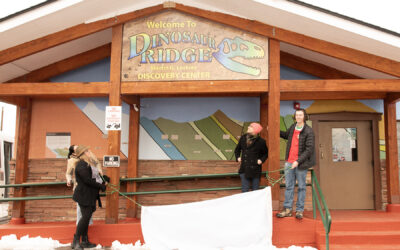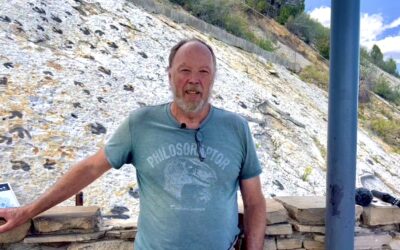A four-toed footprint likely made by a Triceratops during the Late Cretaceous in what is now Golden, Colorado was close to joining the fate of its long-gone maker. Gravity and erosion were conspiring to break the sandstone footprint into unrecognizable pieces, but a timely intervention has saved the rare track from destruction.
Bulging outward from a vertical sandstone wall near a picturesque golf course appropriately named Fossil Trace, the print had been uncovered decades ago by a clay mining operation. The site is now a public trail where people can view convex footprints made by Cretaceous creatures when the upright sandstone was horizontal ground.
Triceratops Trail also features palm frond impressions, small mammal and insect tracks, and even holes left by ancient gas bubbles now set in stone. Other dinosaur tracks include some believed to have been made by Tyrannosaurus rex.
As sometimes happened, dinosaur footprints filled in with sediment and were buried and compressed, solidifying into rock over millions of years. Later exposure through erosion or construction projects revealed fossilized impressions.
In this case, geological layers tilted upward as the Rocky Mountains formed. In the 1870s clay-miners inadvertently exposed layers of sandstone sandwiched between layers of clay. The harder stone surfaces turned out to contain fossilized traces of prehistoric plant and animal life.
Stewards of Triceratops Trail recently raised the alarm when it appeared one particular print was close to detaching and falling. “You could see that a crack between the footprint and the wall it was on was widening, and the weight of the footprint would soon cause it to break off and likely shatter,” explained Dinosaur Ridge Executive Director Jeff Lamontagne.
Dinosaur Ridge is a nearby fossil site managed by a nonprofit that also oversees Triceratops Trail. Both locations are part of the Morrison-Golden Fossil Areas National Natural Landmark. Lamontagne reached out to state and local scientists and museum professionals including History Colorado. Paleontologists feared the track wouldn’t survive the winter, so it was carefully jacketed in plaster and collected from its resting place of 66-million-years.
The footprint is now on display at the Golden History Museum where visitors can view it for free. “There’s a limited amount of these remnants of the Dinosaur Age. It’s a terrible loss if we don’t protect them,” Lamontagne said.

A team led by paleontologist Colton Snyder of History Colorado covers the track with a field jacket before removing it from the vertical rock wall. The plaster jacket provides a protective covering to keep the fossil intact during removal and transfer to a safe location. Photo courtesy of History Colorado/The City of Golden.




